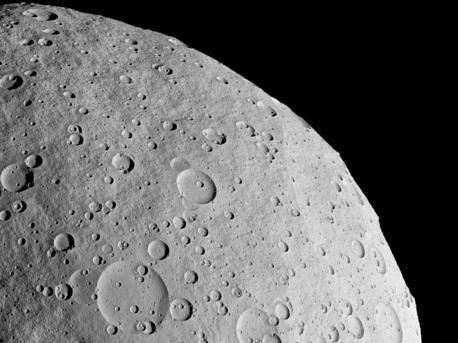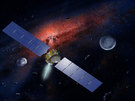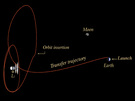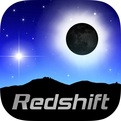Vesta - an asteroid in 3D
Bulges and indentations: a picture of Vesta
 © NASA/JPL
|
As a basis for the animation of the virtual Vesta, the researchers obtained 'simulated' images of the asteroid’s surface from NASA. These were based on images acquired by the Hubble Space Telescope. This material allowed the researchers to calculate the likely shape of Vesta.
DLR researchers have been able to test their stereo imaging software using the animation of Vesta. "Admittedly, we have used this software for the Moon, Mars and Mercury, but each mission has its own peculiarities," says Roatsch. For the virtual rehearsal, the research scientists obtained simulated images of the asteroid's surface from Dawn's optical navigation lead, Nick Mastrodemos, at NASA's Jet Propulsion Laboratory. These were based on images acquired by the Hubble Space Telescope. With this material, Roatsch and his team calculated the likely shape of Vesta. However, it still took the DLR researchers several weeks for Vesta, with its bulges and indentations, to rotate in their 3D animation. At the same time, an American team from the Planetary Science Institute in Tucson, Arizona was working on a 3D model of Vesta, using the same database but a different method. There were only slight differences between the two terrain models. "We know that our data processing can achieve the required level of accuracy," says Roatsch.
A long journey to the 'wet' asteroid Ceres
Planetary scientists realise that, until now, these are only test runs for the actual mission. "We will not really know what Vesta looks like until Dawn reaches the asteroid," says Carol Raymond, a scientist at NASA's Jet Propulsion Laboratory and Deputy Principal Investigator for the Dawn mission. The spacecraft will orbit the asteroid for about a year, recording and analysing it as accurately as possible. DLR researchers hope to be able to map Vesta as completely as possible. But this will not be the end of the spacecraft's long journey; it will continue to visit the asteroid Ceres, very different from Vesta. Ceres is the largest asteroid discovered so far, orbiting the Sun at up to 450 million kilometres – further than Vesta. Under its thin outer crust, Ceres is thought to have a mantle of water ice and solidified volatiles, which makes up around 25 percent of its mass, surrounding a silicate core.The surface structure of the 'wet' asteroid is still unknown; it may have a thin atmosphere. In February 2015, Dawn will move into orbit around Ceres. "With the Dawn mission, we will get a picture of what happened in the first few million years after the formation of the planets," says Jaumann. "You could say that we are going back in time to the early Solar System".The Dawn mission to Vesta and Ceres is managed by NASA's Jet Propulsion Laboratory, a division of the California Institute of Technology in Pasadena, for NASA's Science Mission Directorate, Washington. The University of California, Los Angeles, is responsible for overall Dawn mission science. The Dawn framing cameras have been developed and built under the leadership of the Max Planck Institute for Solar System Research, Katlenburg-Lindau, Germany, with significant contributions by DLR German Aerospace Center, Institute of Planetary Research, Berlin, and in coordination with the Institute of Computer and Communication Network Engineering, Braunschweig. The Framing Camera project is funded by the Max Planck Society, DLR, and NASA/JPL.
Source: DLR
Vesta - an asteroid in 3D
Bulges and indentations: a picture of Vesta
 © NASA/JPL
|
As a basis for the animation of the virtual Vesta, the researchers obtained 'simulated' images of the asteroid’s surface from NASA. These were based on images acquired by the Hubble Space Telescope. This material allowed the researchers to calculate the likely shape of Vesta.
DLR researchers have been able to test their stereo imaging software using the animation of Vesta. "Admittedly, we have used this software for the Moon, Mars and Mercury, but each mission has its own peculiarities," says Roatsch. For the virtual rehearsal, the research scientists obtained simulated images of the asteroid's surface from Dawn's optical navigation lead, Nick Mastrodemos, at NASA's Jet Propulsion Laboratory. These were based on images acquired by the Hubble Space Telescope. With this material, Roatsch and his team calculated the likely shape of Vesta. However, it still took the DLR researchers several weeks for Vesta, with its bulges and indentations, to rotate in their 3D animation. At the same time, an American team from the Planetary Science Institute in Tucson, Arizona was working on a 3D model of Vesta, using the same database but a different method. There were only slight differences between the two terrain models. "We know that our data processing can achieve the required level of accuracy," says Roatsch.
A long journey to the 'wet' asteroid Ceres
Planetary scientists realise that, until now, these are only test runs for the actual mission. "We will not really know what Vesta looks like until Dawn reaches the asteroid," says Carol Raymond, a scientist at NASA's Jet Propulsion Laboratory and Deputy Principal Investigator for the Dawn mission. The spacecraft will orbit the asteroid for about a year, recording and analysing it as accurately as possible. DLR researchers hope to be able to map Vesta as completely as possible. But this will not be the end of the spacecraft's long journey; it will continue to visit the asteroid Ceres, very different from Vesta. Ceres is the largest asteroid discovered so far, orbiting the Sun at up to 450 million kilometres – further than Vesta. Under its thin outer crust, Ceres is thought to have a mantle of water ice and solidified volatiles, which makes up around 25 percent of its mass, surrounding a silicate core.The surface structure of the 'wet' asteroid is still unknown; it may have a thin atmosphere. In February 2015, Dawn will move into orbit around Ceres. "With the Dawn mission, we will get a picture of what happened in the first few million years after the formation of the planets," says Jaumann. "You could say that we are going back in time to the early Solar System".The Dawn mission to Vesta and Ceres is managed by NASA's Jet Propulsion Laboratory, a division of the California Institute of Technology in Pasadena, for NASA's Science Mission Directorate, Washington. The University of California, Los Angeles, is responsible for overall Dawn mission science. The Dawn framing cameras have been developed and built under the leadership of the Max Planck Institute for Solar System Research, Katlenburg-Lindau, Germany, with significant contributions by DLR German Aerospace Center, Institute of Planetary Research, Berlin, and in coordination with the Institute of Computer and Communication Network Engineering, Braunschweig. The Framing Camera project is funded by the Max Planck Society, DLR, and NASA/JPL.
Source: DLR








